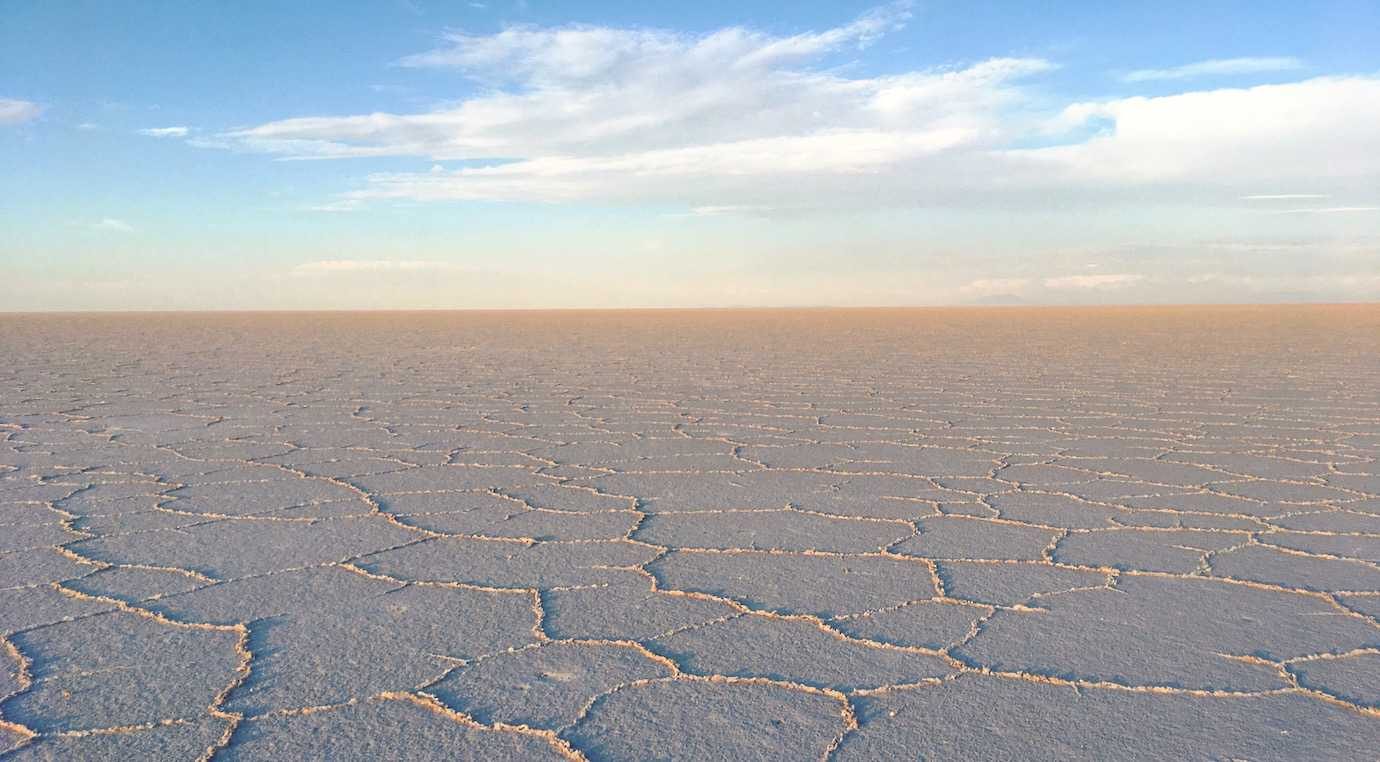
At 10,582 square kilometres, Bolivia’s Salar de Uyuni is the world’s largest salt flat and one of Bolivia’s top highlights. Imagine an endless plain of white salt crystals, rocky desert landscapes and flamingo dotted lagoons backdropped by mountains and volcanoes. You’re in for a treat!
We spent an incredible three days exploring the Salar de Uyuni and its surrounding epic landscapes. This post covers our three day adventure and tips and advice on what to expect from a Uyuni salt flats tour. Read on for more…
When’s the best time to visit the Salar de Uyuni?
You can visit the Salar de Uyuni all year round. Bolivia has two main seasons: the dry and the wet. The dry season runs from May to October and the wet season from November to April. What season you visit the salt flats depends on what you’d like to see.
The dry season is great for photographing the imaginative and fun perspective shots on an endless plain of white salt. In the wet season, the fallen rain forms a shallow layer on top of the salt crystals and the Salar transforms into a giant reflective mirror. It’s worth saying that if there is too much rain, tours can be more unpredictable and sometimes cancelled.
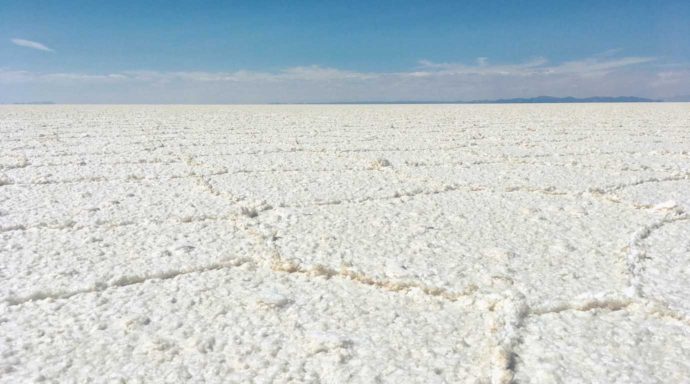
We visited the salt flats in the dry season (October) and had a ball trying to take perspective shots. I’ve since readded visiting the salt flats during the rainy season to my bucket list as I’d love to see the Salar as a mirror reflecting the starry night sky or fiery sunset!
How to get to Uyuni
Uyuni is a small town in Bolivia’s Potosí department located right next to the salt flats. The easiest way to get to Uyuni is by bus. Buses to Uyuni run from La Paz, Potosí and Sucre frequently. If you’re heading to Uyuni from La Paz, it’s around an eight hour bus journey and I’d recommend taking a night bus. We caught the 8pm night bus from La Paz and arrived to Uyuni around 5am and started our tour later that same morning.
Choosing a salt flats tour
You’ll notice very quickly that there are tons of options for choosing a salt flats tour. Salt flat tours range from one to four days and start and end points vary. If you’re in Bolivia the majority of tours will start in Uyuni, although you can also go from nearby Tupiza. A day tour will just show you the salt flats whereas a three to four day tour will show you the same and also take you further into the stunning desert, lagoon and volcanic landscapes. We did the three day tour and I can’t recommend it enough!
When booking a tour you can decide where to finish. Many people use the salt flats tour as a way to get to Chile. A couple in our group chose to end in Chile and they got dropped off at the Chilean border on the third day. We did a round trip so finished back in Uyuni. You can also start salt flat tours in Chile if you’re travelling in the opposite direction.
Costs
I can’t remember exactly how much we paid for our three day tour which isn’t very useful and I now wish I’d noted it down! I think it was somewhere in the region of 700+ bolivianos and we’d added a bus ticket from La Paz to Uyuni to the total price. Accommodation and meals are all included in the tour price.
You will need to take extra cash with you to pay the 150 bolivianos entrance fee to the Eduardo Abaroa Andean Fauna National Reserve, 6 bolivianos for the hot springs and 30 bolivianos for Incahuasi island (both optional).
The three day salt flats tour
Day One
The tour starts at 10.30am and our driver for the three days picked us up from our tour agency’s office in his 4×4.
Day One is the salt flat day. In the morning we visited the train cemetery and saw the Dakar monument.
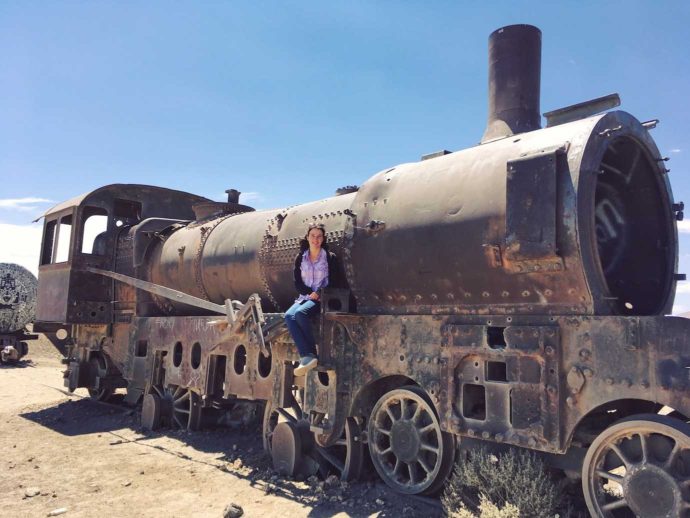
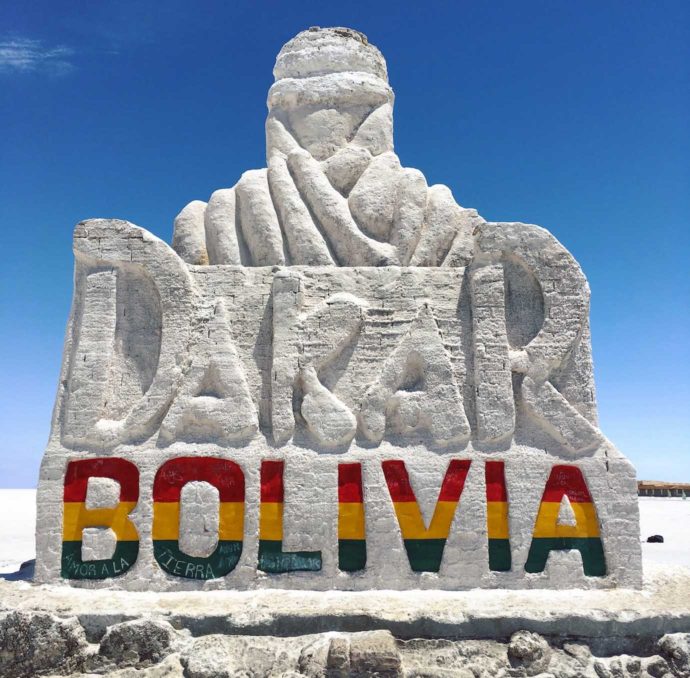
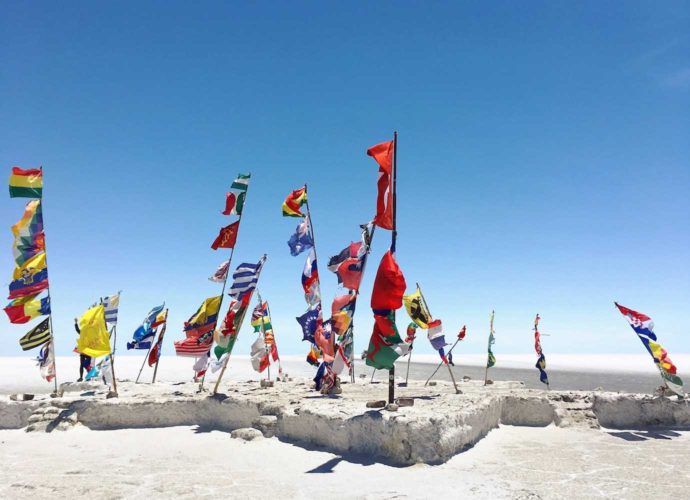 After lunch, we drove further into the salt flats and that’s where the fun and confusion began with trying to take perspective shots – it’s a lot trickier than it looks! Alejandro, our driver, gave us a helping hand in the end.
After lunch, we drove further into the salt flats and that’s where the fun and confusion began with trying to take perspective shots – it’s a lot trickier than it looks! Alejandro, our driver, gave us a helping hand in the end.
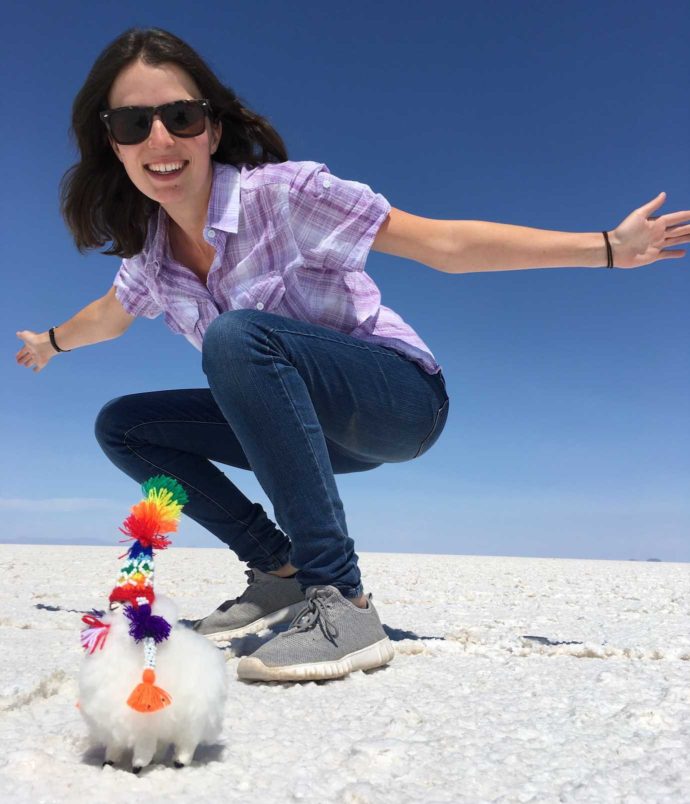
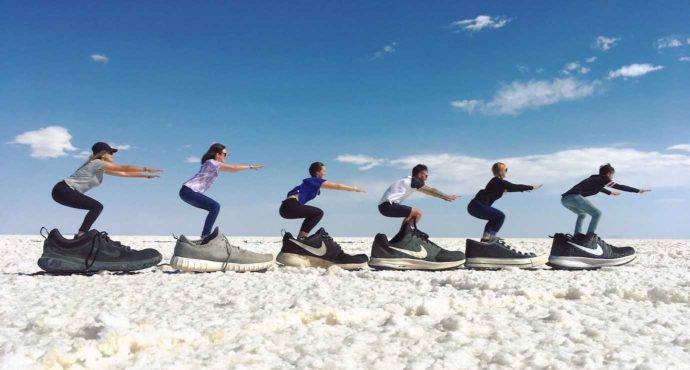
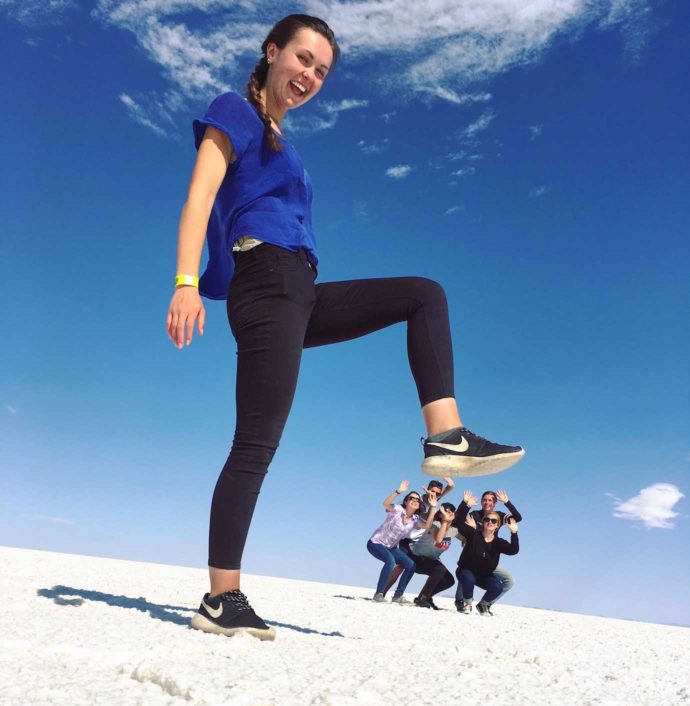
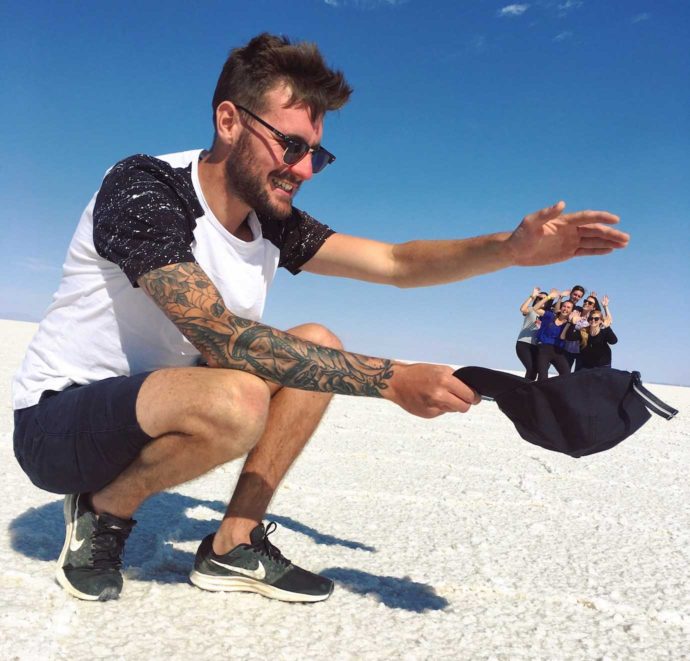
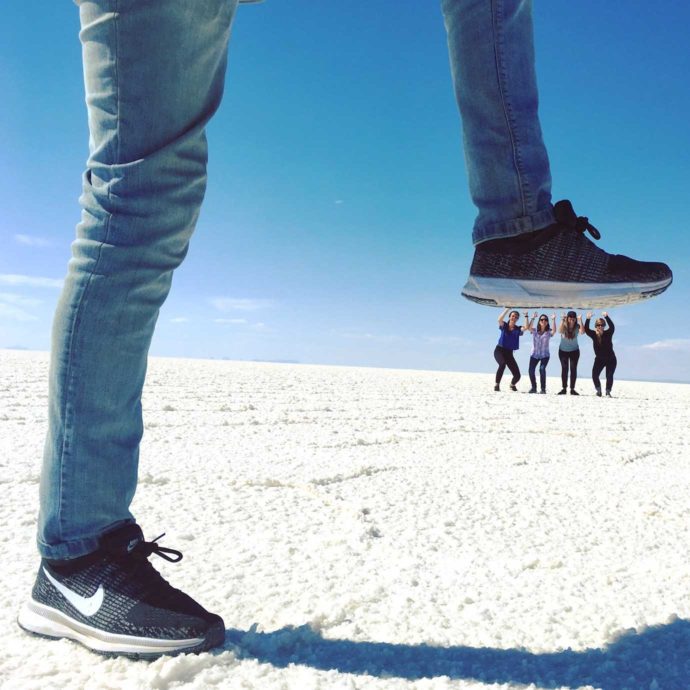
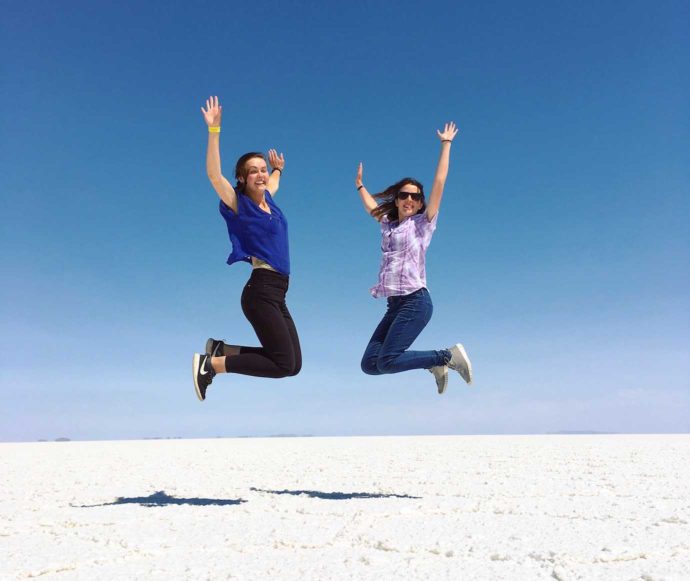
We then went to Incahuasi Island – an island full of giant cacti in the middle of the Salar. Tens of thousands of years ago, when a lake existed, the island was underwater.
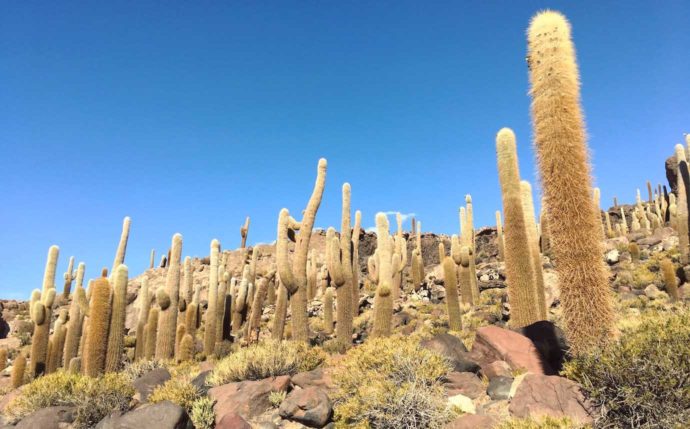
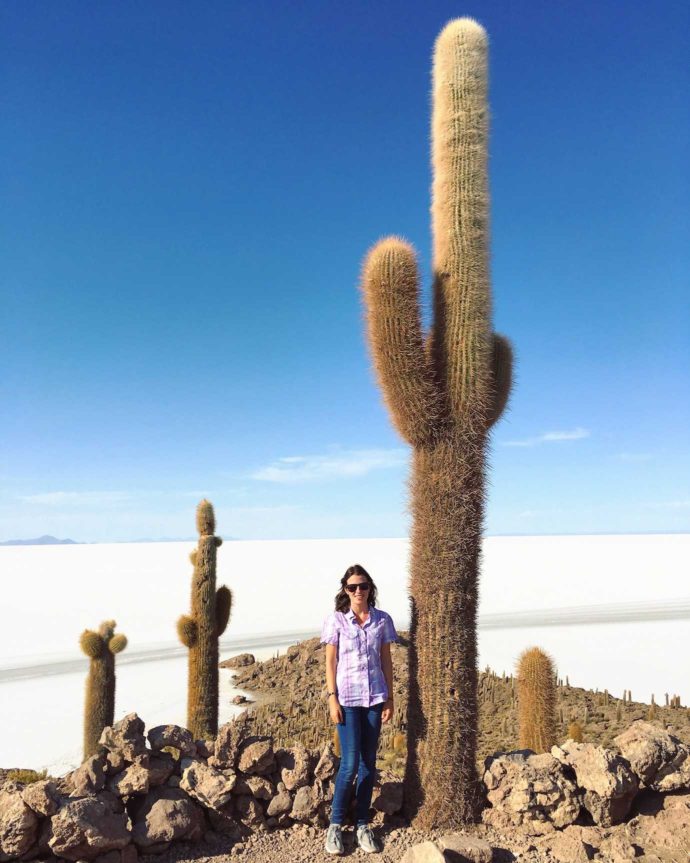
Day One comes to a close with watching the sunset over the salt flats, utterly magical!
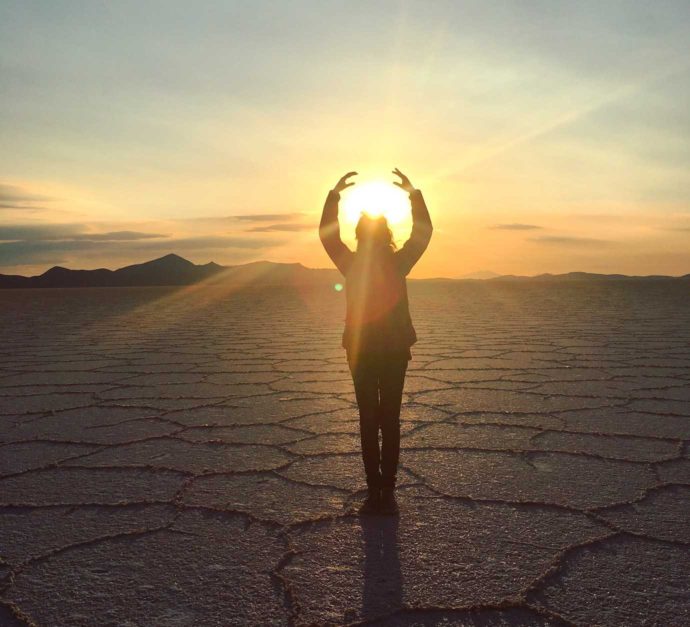
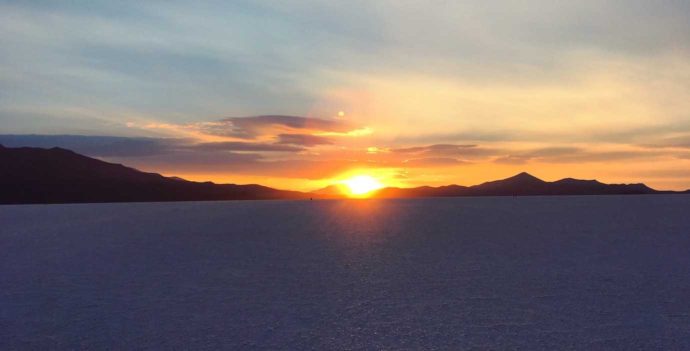
We stayed the night in a basic salt hotel and you could pay for a shower. Although, don’t get too high hopes for a hot one!
Day Two
It’s an early start, we were on the road for 7am. Day Two is all about the epic landscapes and lagoons. We stopped off to view the semi-active Ollague volcano in the distance.
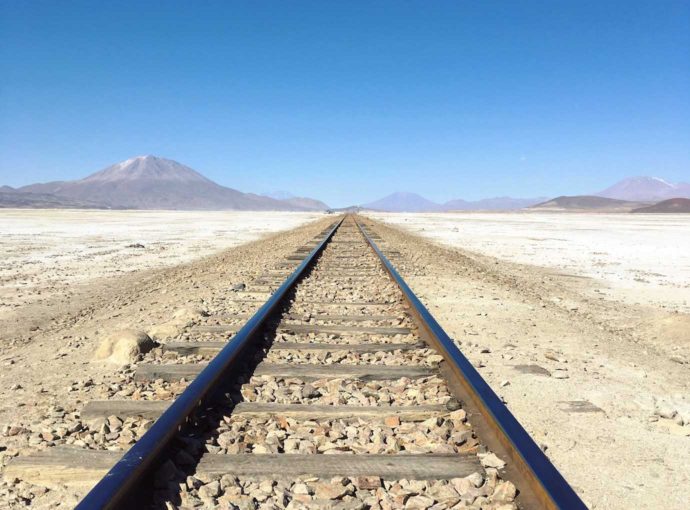
We even saw smoke puffing out. It’s then on to the lagoons teeming with pink flamingos. You’ll visit Laguna Cañapa and Laguna Hedionda before lunch.
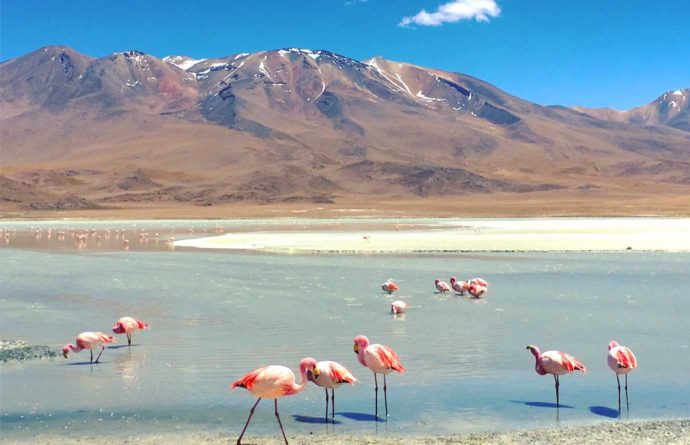
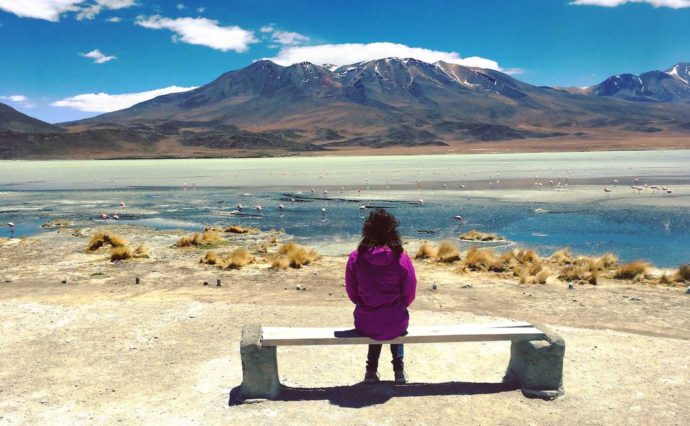
It’s then on into the desert where you’ll see the Arbol de Piedra, a large rock that has been shaped into a tree due to wind erosion over time.
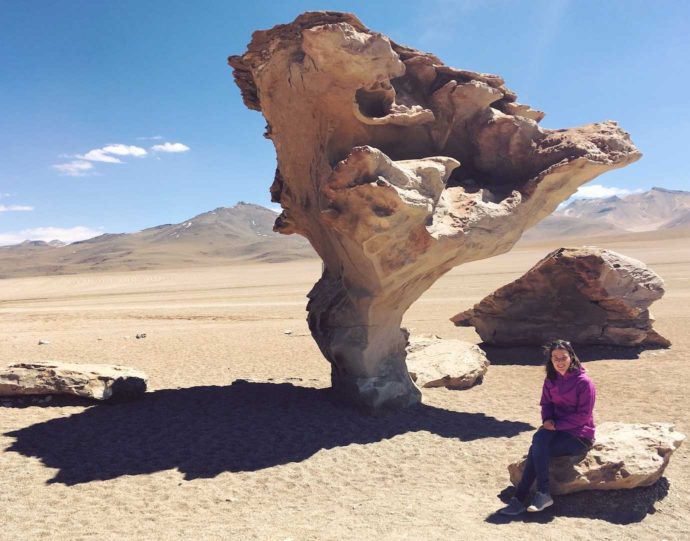
The final stop of Day Two is Laguna Colorada – a blood red lagoon home to hundreds of pink flamingos. Its unusual red colour comes from the red sediments, minerals and algae in the water. Interestingly the lagoon doesn’t always appear red; you’ll need the wind to mix the red sediments, minerals and algae together to see the striking red colour. I loved it and it was my Day Two highlight.
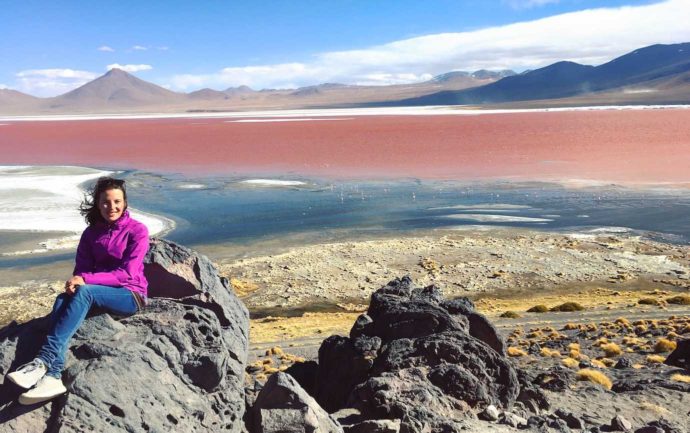
Day Three
Day Three has an even earlier start – we got up at 4.15am and were driving by 5am – so you get to the Sol de Mañana geysers for sunrise. There’s nothing quite like the smell of sulphur to wake you up in the morning. You’ll see the sun come over the horizon and the steam rising from the geysers.
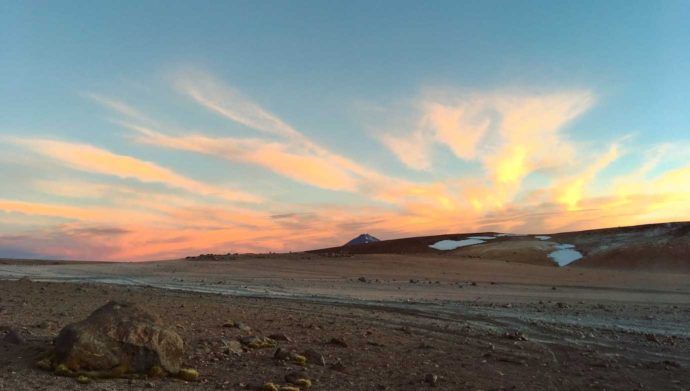
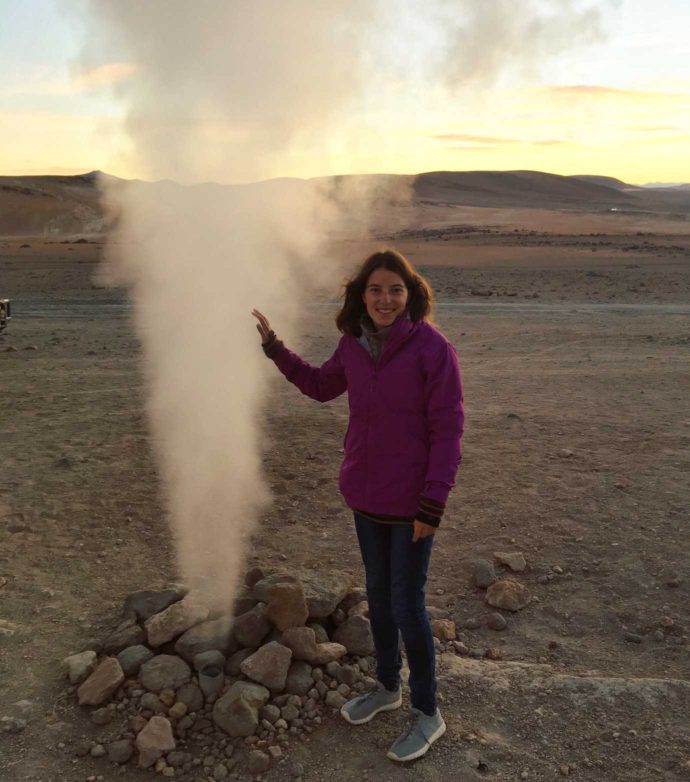
It’s then on to the natural hot springs for a wonderful dip (remember to bring a towel and a swimsuit!).

Although at 7am in the cold outside air, it’s the quickest swimwear change and dash to the water I’ve done. We then continued to drive through the Dali desert and onwards to Laguna Verde.
I’d been looking forward to visiting Laguna Verde throughout the whole trip. I couldn’t wait to see its gorgeous turquoise colour backdropped by a volcano in real life. Like Laguna Colorada, Laguna Verde’s turquoise green colour comes from the sediments and minerals in the water and again only appears green when the wind is up. Sadly, there was hardly any wind when we arrived to Laguna Verde and as a result no stunning turquoise colour – I was really disappointed.
We continued on to the Chilean border to drop off two of our party. With that done, the wind had picked up and Alejandro (our driver) drove us back to Laguna Verde for a second chance shot. I’m so so glad he did, as we were greeted by Laguna Verde at its turquoise best!
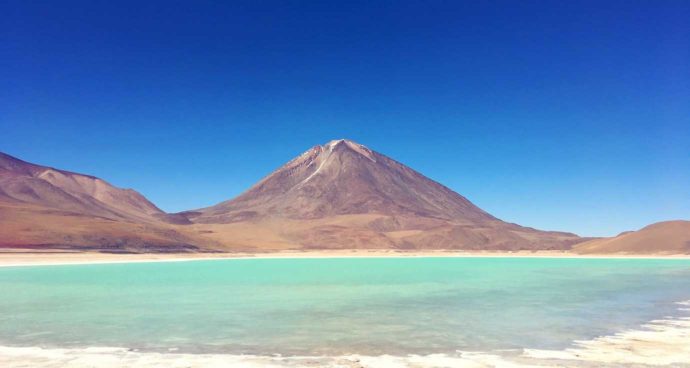
The rest of the day involves a lot of driving back to Uyuni. It’s broken up by a few stops to some cool rocky places.
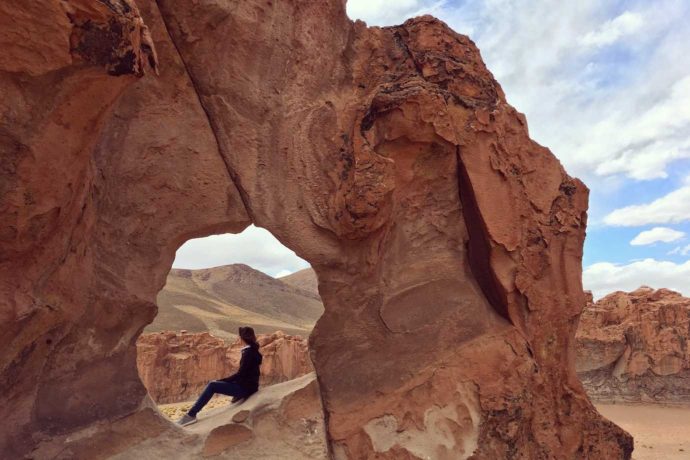

We arrived back to Uyuni around 5pm. You can either stay the night in Uyuni or catch a bus on to your next destination. We caught an evening bus to Potosí.
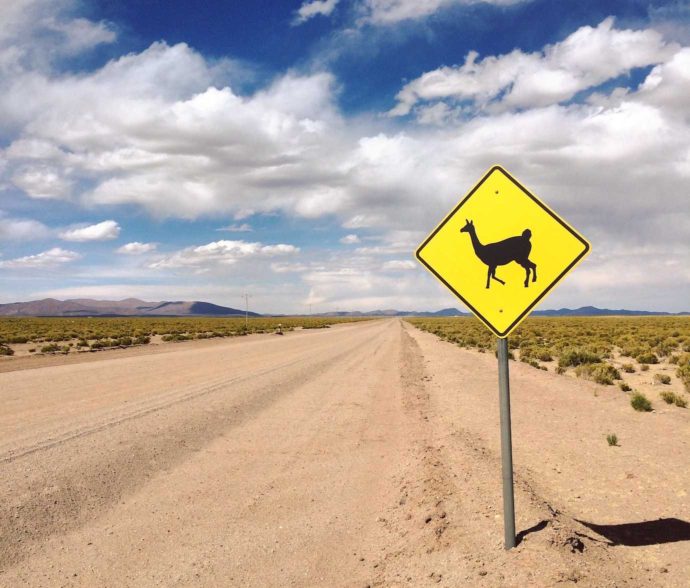
5 Tips and things to know
#1 Six to a 4×4
Not counting the driver, there were six passengers to a 4×4 (having not crossed paths with many Brits on our trip so far, it was a surprise to be find out our whole group was British!). According to our agency, this was the normal number to a vehicle. However, I’ve seen reviews saying there were eight people squished in a car so you might want to double check with your agency. Any more than six and it would be a squeeze and also not safe!
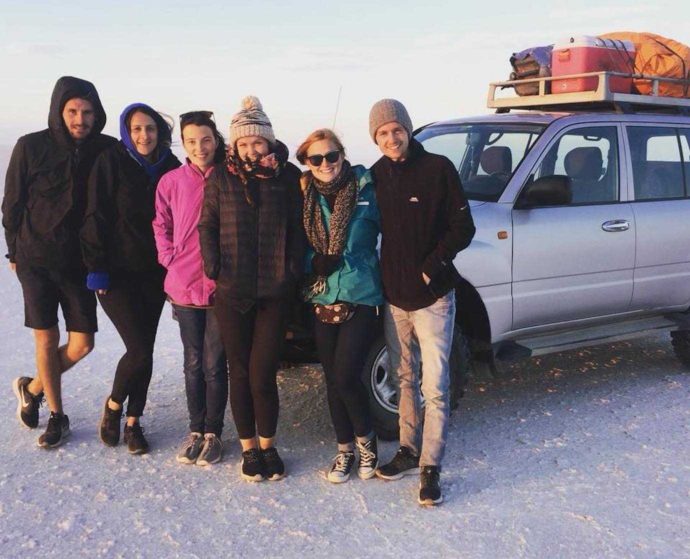
#2 The driver doesn’t double up as a guide
It’s quite often assumed that the driver for your salt flats tour is also your guide. This isn’t really the case. Whilst the driver is extremely knowledgeable about the area and you can ask questions etc, it’s not a guided a tour in the typical sense. Don’t expect your driver to speak fluent English. A lot of them have a basic level but I was really glad I could speak Spanish.
#3 Don’t fall asleep if you’re sat in the front passenger seat
The tour covers long distances so prepare yourselves for long days of driving. The scenery more than makes up for the drive time! Sleeping on long journeys is easily done; however, our driver had a rule that you couldn’t sleep if you sat in the front. This was for safety reasons as apparently there have been a few accidents in the past with drivers falling asleep at the wheel.
So if you’re sat in the front passenger seat, whatever you do don’t fall asleep! Over the course of our three day tour, we rotated who sat in the front.
#4 Bring layers
Whilst it may be warm and sunny in the day, temperatures really drop at night and it gets freezing. I wore nearly all my layers to bed on the second night and the other two couples in our group had rented sleeping bags. My friend and I were fine without them but you’ll definitely want layers!
#5 Bring a portable charger for your devices
The salt flats are in the middle of nowhere and the accommodation is basic. You might be lucky and find a charging socket, but if like me and your phone doubles up as your camera you’ll want to make sure it doesn’t run out of battery – portable chargers are brilliant and so worth it for any trip!
I absolutely loved our three day salt flat tour. The landscapes and scenery were stunningly beautiful and out of this world.
Have you been to Salar de Uyuni? What was your highlight?